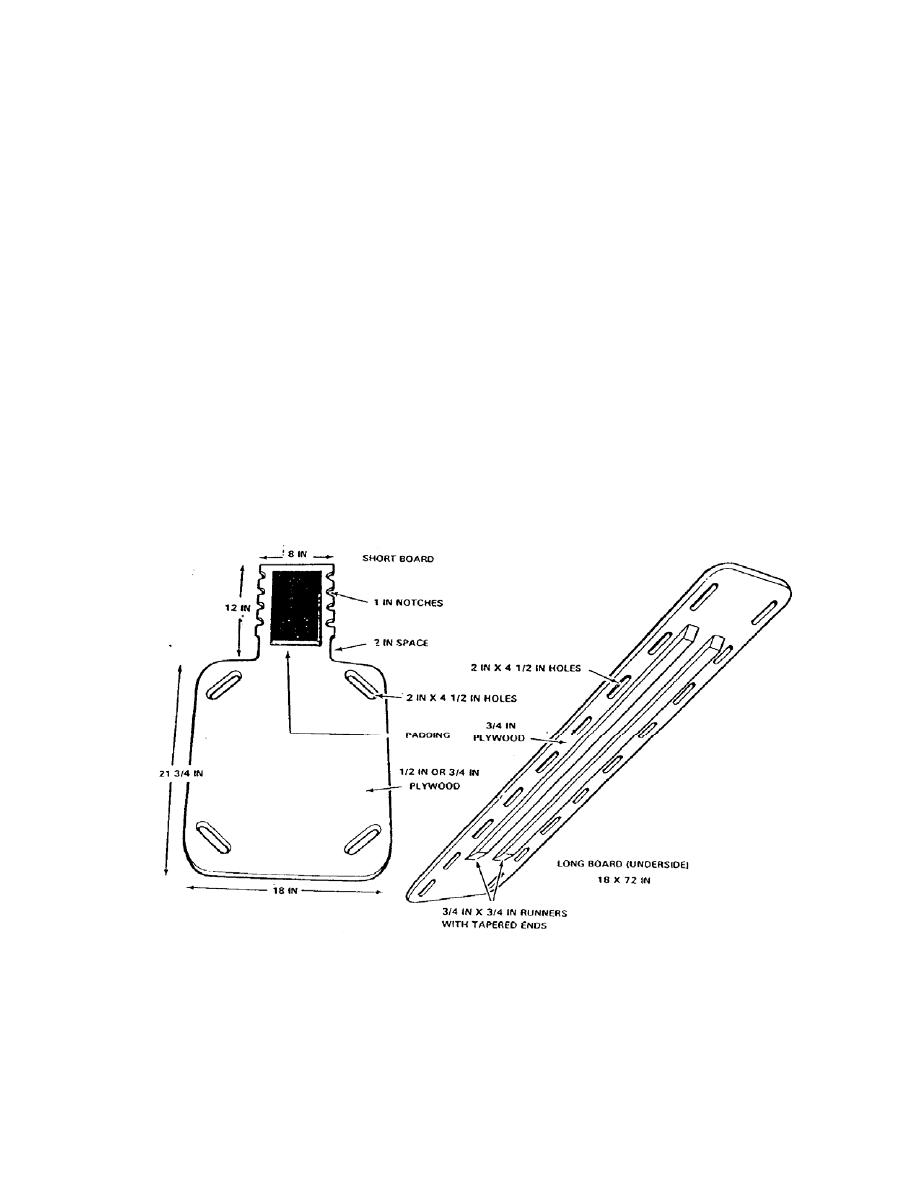
(1)
Have the casualty move his fingers slightly to assess for motor ability.
(2) Touch the casualty's hands and feet with your fingers and ask if the he
feels your touch. Assess both sides at the same time to assess for differences in
sensation.
g. Unconsciousness. Always treat an unconscious casualty as though he has
a spinal injury.
2-4.
SPINE BOARDS
After making sure the casualty is breathing and all severe bleeding has been
controlled, you must immobilize the casualty's spine. This is normally accomplished
using a long spine board or a short spine board (see figure 2-2). If spine boards are
not available, use a door, wide plank, or other flat, rigid materials to immobilize the
casualty's spine. A standard litter can be used, but a more rigid surface is preferred.
Cravats or similar materials are used to secure the casualty to the spine board. The
spine board allows the casualty to be evacuated with a minimum of spinal movement.
Figure 2-2. Short (left) and long (right) spine boards.
MD0533
2-5


 Previous Page
Previous Page
